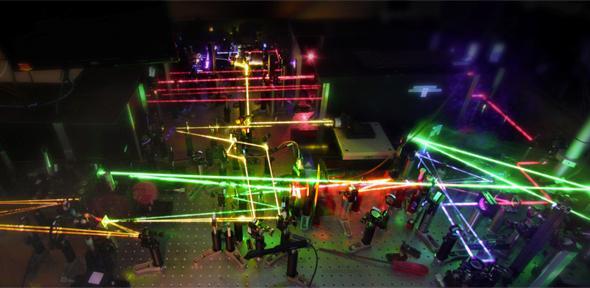
Submitted by Dr Nalin Patel on Thu, 24/10/2013 - 16:10
Latest research paves way for inexpensive, high performance cells
At the moment, organic solar cells can achieve as much as 12 per cent efficiency in turning light into electricity, compared with 20 to 25 per cent for silicon-based cells.
Now, researchers from the Universities of Cambridge and Washington have discovered that manipulating the 'spin' of electrons in these solar cells dramatically improves their performance, providing a vital breakthrough in the pursuit of cheap, high performing solar power technologies.
Ultrafast time resolved spectroscopy was used to monitor what happens from the moment light is absorbed in the device until electrical current comes out. Through this work, which has been published in Nature, it has been possible to identify what mechanisms prevent the loss of electrical current in good organic solar cells.
"This discovery is very exciting, as we can now harness spin physics to improve solar cells, something we had previously not thought possible. We should see new materials and solar cells that make use of this very soon" said Dr. Akshay Rao, a Research Fellow at the Cavendish Laboratory and Corpus Christi College, Cambridge, who lead the study with colleagues Philip Chow and Dr. Simon Gélinas.
This work was partly supported by a Winton Pump Prime award, which enabled some of the measurements to be performed.
Details can also be found on the University research website.

